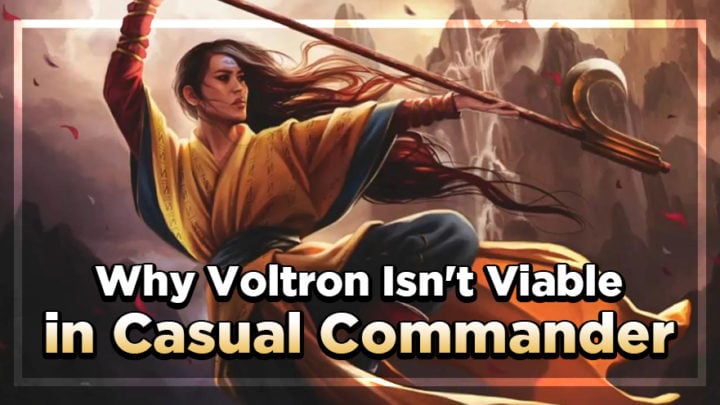Voltron in Commander has historically been a bit of an underdog. Part of that is because of how easy it is to disassemble; an equal part has been because of how narrow a game plan it has. But why has its viability fallen in recent times? Let’s dig in.
Voltron

Voltron is the strategy of having your deck revolve around your commander, and using said commander to do lethal combat damage to an opponent to take them out of the game. As the total damage threshold for commander damage is 21, it’s a lot easier, in many ways, to strap up one creature with buffs and evasive keywords in order to deal 21 over one or more turns than to deal 40 with a wider board.

There’s definitely a risk in playing Voltron, particularly if your commander costs five mana or more. You’ll need to run counterspells or protection spells, equipment and auras that grant indestructible and hexproof, and have ways to either cheat the cost to replay your commander, or ways to reanimate it.
Historically, Voltron has struggled at tables that run a lot of interaction. At least until recent years, many Voltron decks have always felt a little short on tools for victory. There’s also the fact that many decks play on a different axis to the one Voltron plays on.
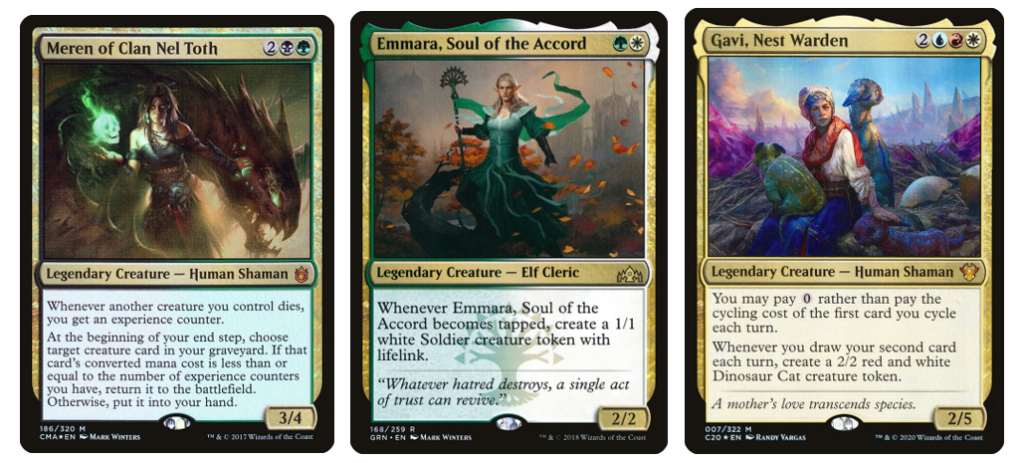
You might sit down at a table of decks that produce lots of tokens; decks with cheap, easy to assemble combos; control decks. All of these decks can provide a massive hurdle to a Voltron deck’s chance of winning. That’s not to mention Aristocrats decks, the bane of Voltron decks everywhere. Unless you’re piloting Sigarda, Host of Herons, you’re usually pretty screwed unless you make a bee-line for them out of the gates.

New Tools
Last year, one of the ways I explored to make Voltron relevant against more experienced tables was experimenting with a certain amount of stax. It’s a strategy that’s pretty easy to put together in artifact-heavy Voltron builds, and dropping a Winter Orb at the right time can do a lot to help you secure a game. The thing is, though, it’s really not too fun unless people have signed up for it.
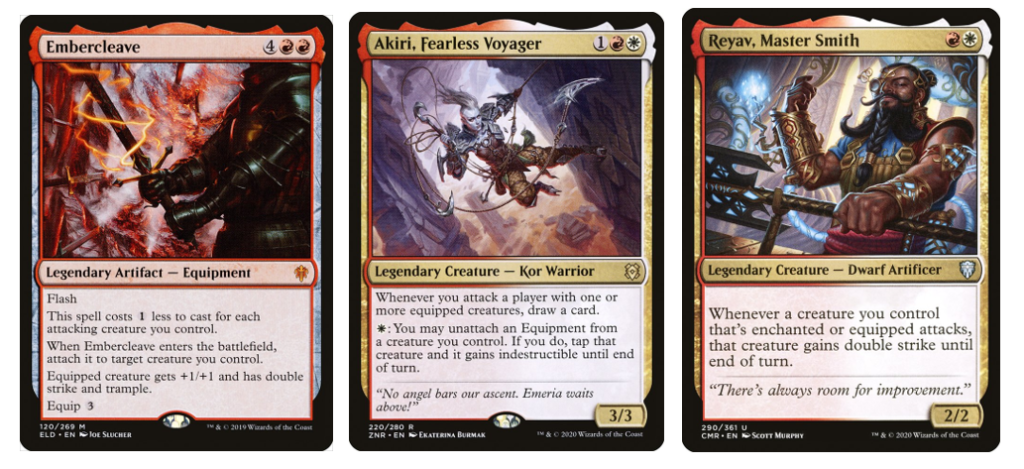
Thankfully, the last year or so of products has been really kind to Voltron players everywhere. We’ve had strong new equipment like Embercleave and Shadowspear; new interaction like Flawless Maneuver and Deflecting Swat; new creatures like Fervent Champion and Armored Skyhunter; and new ways to synergize, like Rebbec, Architect of Ascension and Forging the Tyrite Sword.
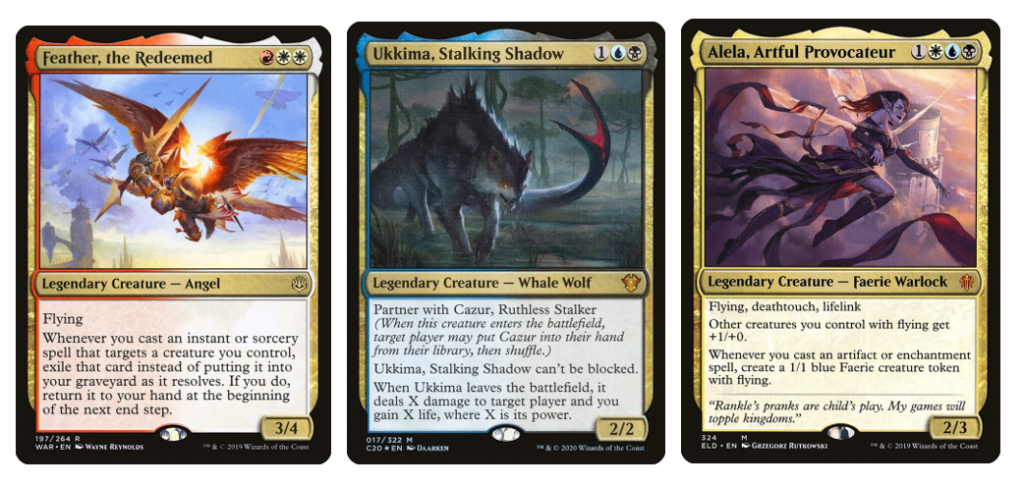
That’s not to mention the newer Voltron commanders we’ve gained access to. Cards like Feather, the Redeemed, Ukkima, Stalking Shadow and Alela, Artful Provocateur all allow you to aspire to Voltron as a win condition but by traveling a different road, paved with interaction and ways to disrupt the opponent.

These new tools have breathed new life into the strategy, and I’ve seen some killer Voltron builds across the table over the last six months. I’ve even brought back Syr Gwyn from the brink, and found access to new cards has helped immeasurably at keeping her relevant.
So, with access to new tools, more consistency, and more power, what’s holding Voltron back? Well, the answer isn’t tied to the game at all, but the way people play it.
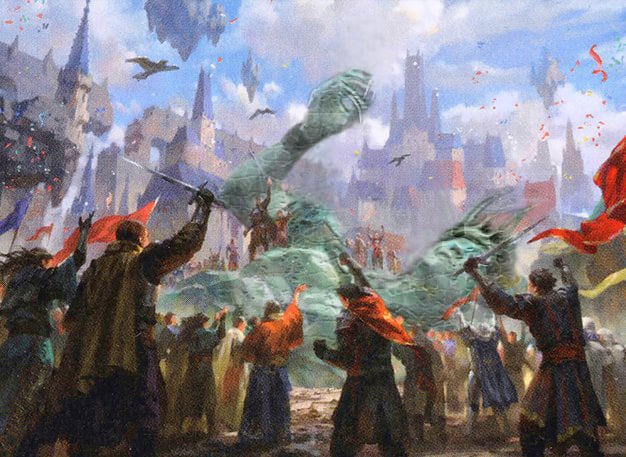
Social Commander Emerges
For the longest time, Voltron strategies have been relegated to the “lower power” tables, as they’re generally not well equipped to play in high power EDH, let alone in cEDH. While a budget Feather build can joust for position at a lower-end competitive table, Voltron is generally still pretty fragile when it comes to high power. It’s not impossible, and you can take a win out of nowhere by surprising the right table, but you get the jist.
What’s truly competing against Voltron at lower echelons of play these days, though, is not another strategy. Instead, it’s the players piloting the decks. For a lot of people, casual Commander is social Commander. They have limited time to play, they want to have fun, and they want to see their deck do its thing. I’ve covered this recently in more depth in my article on why Casual Commander isn’t what you think it is, but in general, there’s been a marked shift toward maximizing play experience for all parties. This has been especially relevant in webcam EDH, where it’s a lot harder to judge moods, and where less familiar playgroups are thrust together in fleeting moments.
Equal Treatment

Because of the rise of social Commander playgroups, Voltron struggles. Voltron, as a strategy, relies on threat assessment. A Voltron player must be able to ascertain which player to remove from the game first; they must not be shy about dishing chip damage out early in the game; and they must be ruthless in accomplishing their objective. Anything less, and they stand to lose everything. If a Voltron player stays alive for just one extra turn, it’s often enough to completely turn a game on its head.
Now, part of what makes social Commander fun is exactly that prospect: a game being turned on its head at the last moment. These games make for memorable experiences, allow decks to play in different situations, and allow for some great last-ditch efforts. Ultimately, though, they serve a higher purpose: to keep players in the pod longer in order to have more fun, and maximize the social experience.
I’m confident that part of what’s responsible for this rise in the value of the social side of things is the lockdown. It’s a lot harder to duck in and out of games when you can’t move to a different table in the LGS. But that’s by the by — social Commander is here, and always has been, and as such, it’s going to affect how games are played.
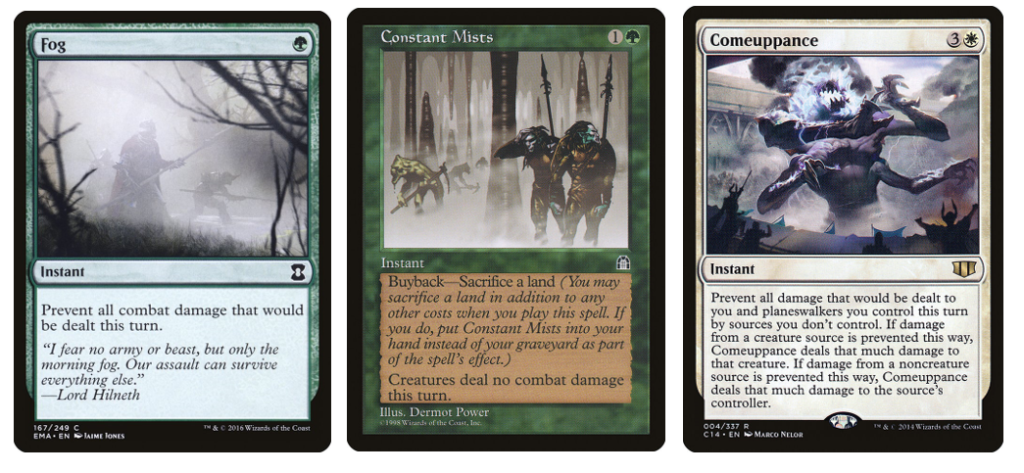
The most obvious effect this has had on Voltron decks is the amount of fogs that see play. Historically speaking, it’s predominantly been more controlling or set-up based decks that have run Fog or similar effects. Over the past year or so, though, I’ve seen more and more players pack these cards as get-out-of-jail-free cards, as they make for memorable plays and can really catch aggressive players off guard.
While I’m all for aikido-style play and galaxy-brain maneuvers, this natural evolution of gameplay has really begun to hurt Voltron decks. In a lot of ways, this is an expected self-correction — new consistency tools and powerful new Voltron cards mean these decks are more threatening, so more ways of answering them are needed. What makes life harder for Voltron decks is navigating both this and the social aspects of casual Commander. People will sometimes stop you killing a player not because it’s optimal, but because it’s funny. It can be infuriating, but it will happen.
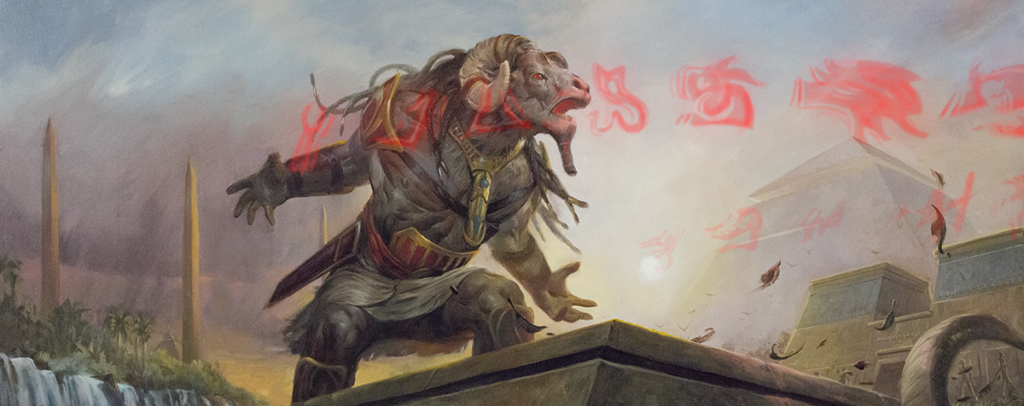
A “Swingier” Format
As Voltron gains new tools and new game pieces that increase its consistency, other decks must react. To pin decks playing more ways to stop Voltron entirely on Voltron is to ignore the fact that the format has gotten quicker and “swingier,” though. Even non-combo decks can assemble a game-winning board in record time, and both new commanders and new creatures are veering toward “must-answer” with alarming regularity.
As such, players are generally running more spot removal, as well as disruptive effects that stop damage. This will inevitably engender an environment where Voltron is ill-favored — it’s as simple as that.
With all this in mind, I think the way we frame the viability of Voltron needs adjusting. Because in truth:
Voltron isn’t Viable… if you care about winning
It’s as simple as that. If you’re playing at the more “social” Commander tables, then yes — voltron isn’t as viable, if you care about winning. The moves a Voltron deck generally has to make to enable it to deal with three other players and navigate to a win are decidedly anti-social, and knocking a player out of the game isn’t as trivial as it once was. In a world of webcam Commander, that player is essentially relegated to the role of observer — unless they have to go get dinner.
It’s worth noting, however, that there are still plenty of tables where you can happily play Voltron and easily take a win. I’m not saying the sky is falling or anything — just that, because the way we play Commander has changed, it’s not as clean cut that you’ll be able to sit down and accomplish your goal with a Voltron deck.
If you do care about winning, though, and find yourself channeling your inner Vegeta as your attacks barely cause a scratch, then consider adding some ways to circumvent that annoying interaction before you flip a table.
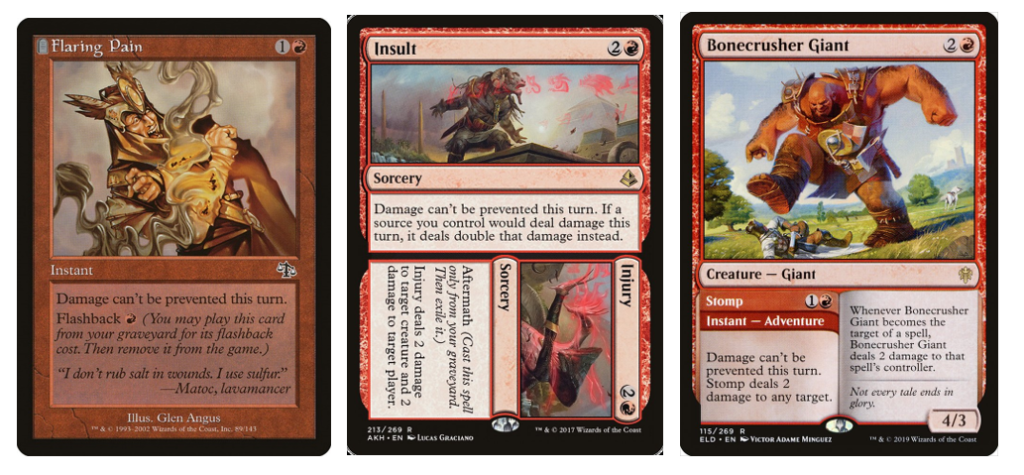
Though there aren’t very many damage prevention effects, the ones available are pretty efficient, and come with some nice added extras, like a creature, or having flashback.
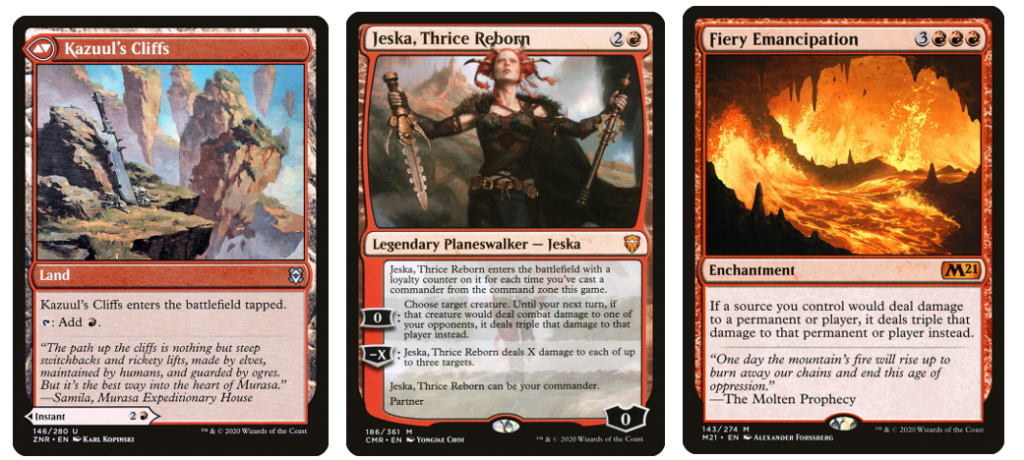
What’s more, it’s basically free to include a card like Kazuul’s Cliffs in your mana base. A lot of the time it’ll be a tapped land, but sometimes? Flinging your strapped-up death machine at face can achieve the same effect as attacking with it. Don’t be afraid to slot in damage doubling — or tripling! — effects, too. Sometimes you gotta increase the clock speed to take a win.
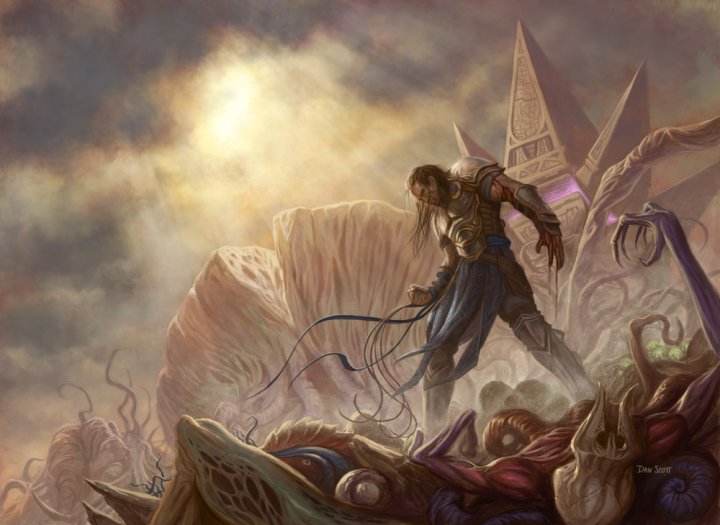
At the end of the day, Voltron is playgroup-dependent in the same way many decks are. Sometimes, your graveyard strategy will be stonewalled; sometimes, your friends won’t want to play against a Grave Pact deck; and sometimes, people generally want to do silly stuff and break out the Timesifters. You won’t always be able to win with it, but try and take note of whether that’s because of your deck choice, or because of the type of game people are angling for. Social Commander aims to keep players alive long enough to tell a tale — Voltron wants to be the hero of the tale. It doesn’t always add up, but that’s okay.
If you enjoyed this piece, hit me up on Twitter to continue the discussion.

Kristen is Card Kingdom’s Head Writer and a member of the Commander Format Panel. Formerly a competitive Pokémon TCG grinder, she has been playing Magic since Shadows Over Innistrad, which in her opinion, was a great set to start with. When she’s not taking names with Equipment and Aggro strategies in Commander, she loves to play any form of Limited.

